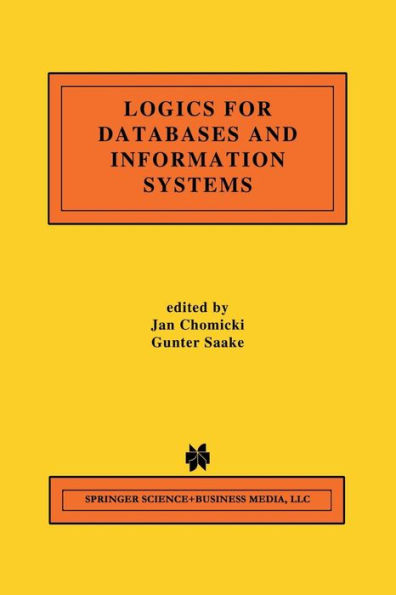Logics for Databases and Information Systems
Time is ubiquitous in information systems. Almost every enterprise faces the problem of its data becoming out of date. However, such data is often valuable, so it should be archived and some means to access it should be provided. Also, some data may be inherently historical, e.g., medical, cadastral, or judicial records. Temporal databases provide a uniform and systematic way of dealing with historical data. Many languages have been proposed for temporal databases, among others temporal logic. Temporal logic combines abstract, formal semantics with the amenability to efficient implementation. This chapter shows how temporal logic can be used in temporal database applications. Rather than presenting new results, we report on recent developments and survey the field in a systematic way using a unified formal framework [GHR94; Ch094]. The handbook [GHR94] is a comprehensive reference on mathematical foundations of temporal logic. In this chapter we study how temporal logic is used as a query and integrity constraint language. Consequently, model-theoretic notions, particularly formula satisfaction, are of primary interest. Axiomatic systems and proof methods for temporal logic [GHR94] have found so far relatively few applications in the context of information systems. Moreover, one needs to bear in mind that for the standard linearly-ordered time domains temporal logic is not recursively axiomatizable [GHR94]' so recursive axiomatizations are by necessity incomplete.
1117015108
Logics for Databases and Information Systems
Time is ubiquitous in information systems. Almost every enterprise faces the problem of its data becoming out of date. However, such data is often valuable, so it should be archived and some means to access it should be provided. Also, some data may be inherently historical, e.g., medical, cadastral, or judicial records. Temporal databases provide a uniform and systematic way of dealing with historical data. Many languages have been proposed for temporal databases, among others temporal logic. Temporal logic combines abstract, formal semantics with the amenability to efficient implementation. This chapter shows how temporal logic can be used in temporal database applications. Rather than presenting new results, we report on recent developments and survey the field in a systematic way using a unified formal framework [GHR94; Ch094]. The handbook [GHR94] is a comprehensive reference on mathematical foundations of temporal logic. In this chapter we study how temporal logic is used as a query and integrity constraint language. Consequently, model-theoretic notions, particularly formula satisfaction, are of primary interest. Axiomatic systems and proof methods for temporal logic [GHR94] have found so far relatively few applications in the context of information systems. Moreover, one needs to bear in mind that for the standard linearly-ordered time domains temporal logic is not recursively axiomatizable [GHR94]' so recursive axiomatizations are by necessity incomplete.
219.99
In Stock
5
1

Logics for Databases and Information Systems
430
Logics for Databases and Information Systems
430Paperback(Softcover reprint of the original 1st ed. 1998)
$219.99
219.99
In Stock

Product Details
| ISBN-13: | 9781461375821 |
|---|---|
| Publisher: | Springer US |
| Publication date: | 10/21/2012 |
| Series: | The Springer International Series in Engineering and Computer Science , #436 |
| Edition description: | Softcover reprint of the original 1st ed. 1998 |
| Pages: | 430 |
| Product dimensions: | 6.10(w) x 9.25(h) x 0.04(d) |
From the B&N Reads Blog
